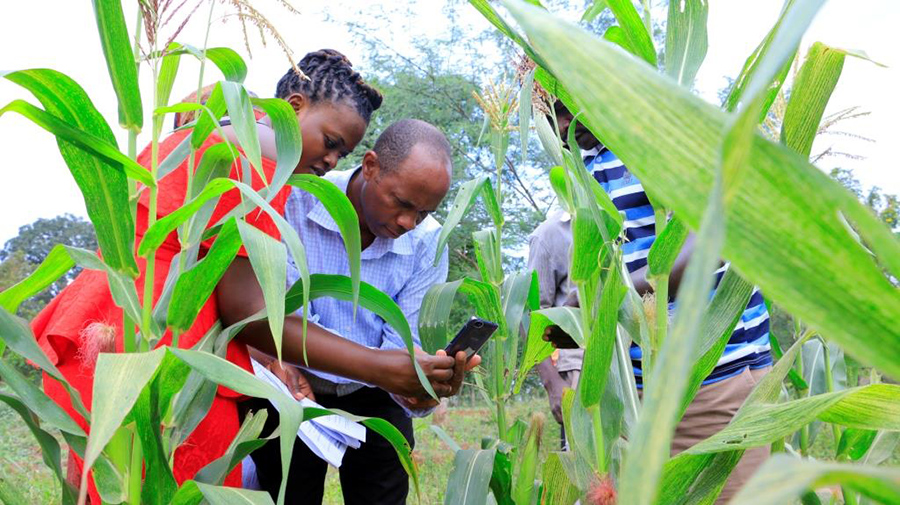Let us know what type of content you'd like to see more of. Fill out our three question survey.
Unveiling the Future: State of the Digital Agriculture Sector Report
Jan 18, 2024
In the ever-evolving landscape of agricultural development, the digital revolution has taken center stage. Digital tools have the potential to transform the agriculture sector, especially across low- and middle-income countries (LMICs).
The recently published “State of the Digital Agriculture Sector” report from Beanstalk, funded and sponsored by the U.S. Agency for International Development, DAI, and the Bill & Melinda Gates Foundation, delves into the current trends, challenges, and opportunities shaping the future of agriculture in the digital age.
The report’s findings result from rigorous research, analysis, and consultations with a diverse range of stakeholders, including farmers, policymakers, agribusinesses, technology providers, and development organizations to gain firsthand insights from individuals and organizations at the forefront of digital agriculture.

Photo: CABI.
Key Highlights
Digital Transformation Accelerating Agriculture: Digital tools, such as precision farming techniques, powered by Internet of Things (IoT) sensors and data analytics, play a pivotal role in modernizing agriculture and enabling farmers to optimize crop yields, conserve resources, and enhance sustainability. In addition to these technologies, smart supply chain solutions can ensure efficient distribution, reduce waste, and meet consumer demands effectively.
Data-Driven Decision-Making: The use of data analytics can empower farmers, policymakers, and stakeholders to make data-driven decisions, optimize resource allocation, and mitigate risks. From weather forecasting to market trends, these data-driven insights are revolutionizing agricultural practices and enhancing productivity.
Emerging Technologies Redefining Agriculture: The agricultural landscape is undergoing a transformation driven by new technologies such as artificial intelligence (AI), blockchain, and robotics. AI algorithms, for example, can analyze vast datasets to predict crop diseases, optimize irrigation schedules, and enhance overall agricultural productivity. Additionally, blockchain technology ensures traceability, transparency, and trust in food supply chains, fostering consumer confidence, and enabling fair trade practices.
Key Challenges Ahead
Disconnected Knowledge-Sharing Networks: Limited access to information, expertise, and resources hinders collaboration, innovation, and sustainable development. Bridging these knowledge gaps is essential for fostering collaboration, sharing best practices, and driving collective impact.
Financial Viability Concerns: Financial viability remains a critical concern for farmers and agribusinesses adopting digital technologies. High upfront costs, limited access to financing, and uncertain returns on investment can deter adoption and innovation. There is a need for innovative financing models, public-private partnerships, and supportive policies to enhance financial viability and sustainability.
Infrastructure Gaps: Limited access to reliable connectivity, electricity, and technology impedes digital integration in agriculture. To overcome these challenges, investment in rural infrastructure, digital connectivity, and technology adoption are essential to unlock the full potential of digital agriculture.
User Engagement Issues: Successful digital agriculture requires active user engagement, participation, and collaboration. Addressing challenges like limited awareness, training, and capacity-building through tailored training programs and stakeholder collaboration is essential for driving digital adoption and transformation.
Lack of Quality Impact Measurement: Measuring the impact of digital interventions is paramount for assessing effectiveness, scalability, and sustainability. The report addresses the challenges of a lack of quality impact measurement methodologies, data collection mechanisms, and evaluation frameworks. Developing robust impact measurement tools, methodologies, and frameworks are essential for evaluating outcomes, informing decision-making, and driving continuous improvement.
Gender Inequality and Social Exclusion: Gender inequality and social exclusion remain pervasive challenges within the digital agriculture landscape. The report sheds light on the gender disparities, cultural barriers, and social norms hindering women’s participation, access to resources, and decision-making. Promoting gender equality, empowering women, and fostering inclusive agricultural policies and programs are crucial for achieving sustainable development goals and driving equitable growth.
Climate-Smart D4Ag Deployment and Credibility Constraints: Climate-smart digital agriculture deployment faces unique challenges, including credibility constraints, regulatory barriers, and technological limitations. The report outlines strategies for addressing these challenges, fostering collaboration, and promoting responsible, sustainable, and scalable digital agriculture solutions.
As we navigate the complexities of the digital agriculture landscape, we find that collaboration, innovation, and commitment are essential for achieving sustainable development goals, enhancing food security, and empowering communities worldwide.
How to Access the Report: Ready to explore the future of agriculture? Access the full report here. This report offers a reflection of unprecedented breadth and depth on the historical growth, challenges, and futures for the digital agriculture sector, as well as a diverse but targeted set of stakeholder-specific recommendations to ensure a “thriving” D4Ag landscape in the decade to come.
Watch the Presentation: For a more in-depth exploration of the report’s findings, insights, and recommendations, we invite you to watch the presentation at ICTforAg here. Join the conversation, share your insights, and contribute to shaping the future of digital agriculture.
Juliet Terrill is a Program Associate on the USAID Digital Frontiers team.